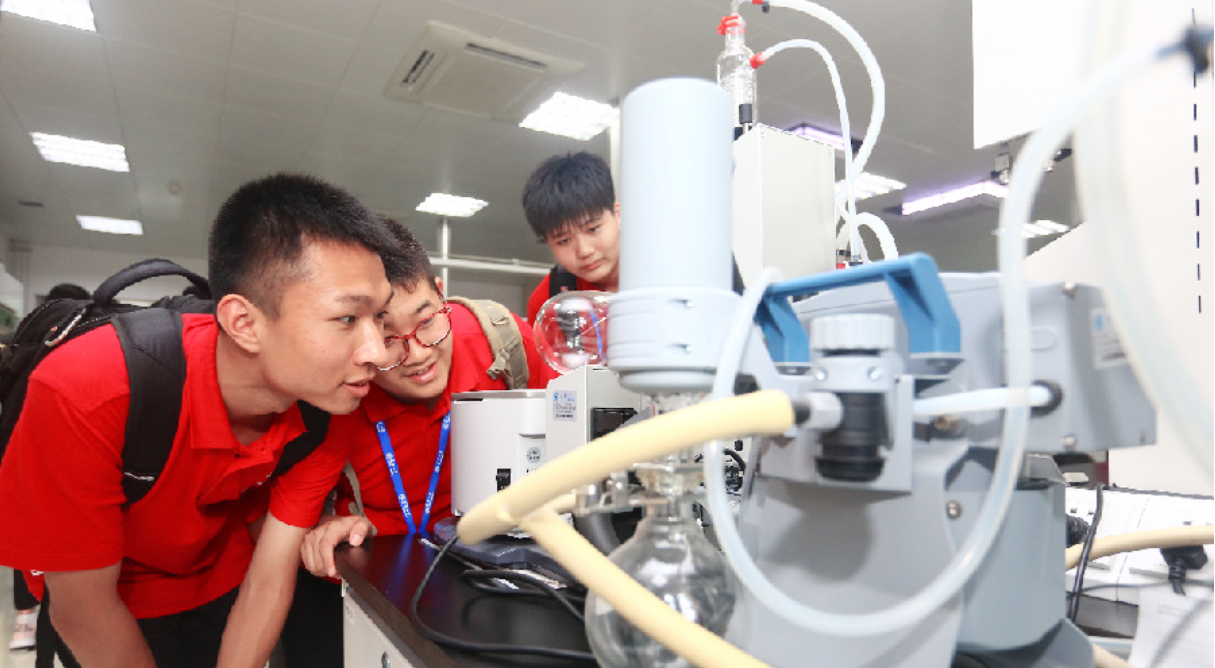Equity assessment of education fund to echo social expectations

Empirical studies have found that with its present capital the education fund could better address equity if the money were invested in the students at lower grades. Photo: XINHUA
Since 2012, China’s government expenditure on education has remained more than 4 percent of GDP for six consecutive years, and in 2017 the number exceeded 3.4 trillion yuan, signaling that the gross investment in education is fairly sufficient. Yet the allocation of the education fund faces problems, such as regional imbalances and inequity between cities and villages.
Regarding regional imbalances, in 2016, government expenditure on each primary school student in eastern China was 13,650 yuan while in the middle and western regions it was 9,594 yuan and 11,814 yuan respectively. The country has called upon counties to measure the development of compulsory education since 2010. The move tackled the education equity within the counties while failing to seal the gaps among them.
At present, rural education is short-handed. China’s rural population mainly consists of women, children and the elderly due to urbanization and low birth rate. When adjusting the management of rural schools, governments should consider the factors hindering teachers from working in the countryside, such as insufficient students, poor conditions and remote locations. Meanwhile, the enrollment rate of preschool education needs to be raised. In 2016, the country’s gross enrollment rate for preschool education was 77.4 percent, lower than the rate for nine-year compulsory education at 93.4 percent and for high school education at 87.5 percent. Preschool education for left-behind children and urban kids faces problems as well, mainly insufficient number of kindergartens and high fees. Empirical studies have found that with its present capital the education fund could better address equity if the money were invested in the students at lower grades.
The key to these problems is a fairer allocation of government expenditure on education. Only in this way can a government improve performance and cement its credibility and influence when it comes to public education.
A performance evaluation mechanism for the education fund would be fundamentally concerned with equity. Government expenditure on education is a crucial part of public finance. To evaluate the use of the education fund means to measure the performance of government finance. Between the 1960s and 70s, the US General Accountability Office proposed a 4E model—economics, efficiency, effectiveness and equity—that is recognized as the best paradigm to appraise government performance. Evaluating the performance of the education fund will not just emphasize financial legitimacy and economic efficiency as in a financial assessment or audit, but explore whether the relevant decisions are made in a proper way. It pursues credible enforcement and highlights social values, in which fairness plays a big part.
The central indicator for an equity assessment of the education fund would be the voice of the general public. Government education aims to serve people, so the equity of the education fund is destined to be measured by people. Such a concept conforms to a people-oriented government performance evaluation. To be more specific, an ideal education should satisfy students, parents and the entire society, offering standards for various levels of government to handle educational issues and manage budget performance.
The proper approach to improving the use of the education fund, and consequently education equity, lies in the proper construction of the evaluation mechanism.
The evaluation should have a clear orientation. Its direct purpose is to strengthen the government’s ability to perform its duties and expand achievement in education. At present, China has established an inclusive mechanism for budget performance planning and management, but it has failed to reflect the concept of performance management due to its overemphasis on technology. An ideal mechanism should focus on decision-making and overall fairness, thus reaching social expectations.
The evaluation mechanism can be optimized by involving more official organs. Educational institutions, administrative departments, financial departments and people’s congress at different levels all could voice their opinions. Also, an independent third-party evaluator could be introduced. In addition to streamlining procedures and methods, the system should adopt unified indexes to ensure that students and teachers can also accurately deliver their evaluations of the education fund.
The mechanism should target major education funding. Such evaluations can be initiated by administrative departments, people’s congress or other social organs. A database could help the government know what people expect from education and boost communication with them.
Lastly, the government should proceed with the legalization of the evaluation system. In terms of education, laws and regulations are fairly sound in China. However, the performance evaluation of the education fund lags because it involves multiple departments such as finance and politics. The legalization work should prioritize the clarification of rights and responsibilities of all parties.
(edited by MA YUHONG)

 PRINT
PRINT CLOSE
CLOSE